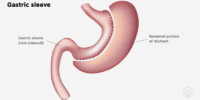Artificial Heart Implant (1982) – Devries: Recap and Summary: First Permanent Artificial Heart Implanted

The first permanent artificial heart implant was performed in 1982 by Dr. William DeVries. This marked a pivotal moment in medical history, showcasing the power of human innovation and resilience in defying the limitations of the human body.
Key Takeaways
- Dr. William DeVries performed the first permanent artificial heart implant in 1982, pioneering the field of artificial heart technology.
- The Jarvik-7, designed by Dr. DeVries and Dr. Robert Jarvik, replaced the functions of a failing heart and offered a lifeline to patients awaiting heart transplantation.
- The demand for donor hearts exceeds the supply, leading to long waiting times for transplantation and high mortality rates for patients on the waiting list.
- The artificial heart prototype, the Jarvik-7, underwent extensive clinical trials to ensure its safety and efficacy, and its compact size and compatibility with the human body made it a promising solution for heart failure patients.
The Pioneering Surgeon: Dr. William DeVries
Dr. William DeVries, a pioneering surgeon, played a pivotal role in the development and implementation of artificial heart implants. In 1982, he made medical history by successfully implanting the first permanent artificial heart into a patient named Barney Clark. This groundbreaking procedure marked a significant milestone in the field of cardiovascular surgery and opened up new possibilities for patients suffering from end-stage heart failure.
Dr. DeVries meticulously designed and refined the artificial heart, known as the Jarvik-7, in collaboration with Dr. Robert Jarvik, an engineer. The Jarvik-7 was a mechanical device that effectively replaced the functions of a failing heart, pumping blood throughout the body. The implantation process required precise surgical techniques and careful monitoring to ensure the success of the procedure.
Under Dr. DeVries' guidance, the first artificial heart implant surgery took place at the University of Utah Medical Center. Despite the challenges and risks involved, Dr. DeVries demonstrated unparalleled skill and expertise, showcasing his commitment to advancing medical technology for the betterment of humanity.
The success of Dr. DeVries' pioneering work paved the way for further advancements in artificial heart technology. Today, artificial heart implants continue to save countless lives, offering hope to those who'd otherwise have no other treatment options. Dr. DeVries' contributions to the field of cardiovascular surgery have forever changed the landscape of modern medicine, providing freedom and a renewed lease on life for patients with end-stage heart failure.
The Urgent Need: End-Stage Heart Failure
With the groundbreaking success of the first permanent artificial heart implant, it's imperative to now address the pressing issue of end-stage heart failure. This condition, characterized by the heart's inability to pump enough blood to meet the body's needs, affects millions of people worldwide.
Organ transplantation has long been the gold standard treatment for end-stage heart failure, but unfortunately, the demand for donor organs far outweighs the supply. This has led to a significant disparity between the number of patients awaiting transplants and the availability of suitable donor hearts.
To shed light on the urgency of addressing this issue, here are four key points to consider:
- Limited Donor Pool: The number of suitable donor hearts is limited due to factors such as donor eligibility criteria, organ preservation challenges, and ethical considerations.
- Long Waiting Times: Patients with end-stage heart failure often face long waiting times for a suitable donor heart, during which their condition may deteriorate, leading to increased morbidity and mortality.
- High Mortality Rates: The mortality rates for patients awaiting heart transplantation are alarmingly high, underscoring the critical need for alternative treatment options.
- Cost and Resources: Organ transplantation is a complex and expensive procedure that requires a significant amount of resources, including specialized medical teams, postoperative care, and immunosuppressive medications.
Addressing the urgent need for end-stage heart failure management requires innovative approaches, such as the development and refinement of artificial heart technology. By expanding treatment options, we can offer hope and improved quality of life to those affected by this debilitating condition.
The Artificial Heart Prototype: Jarvik-7
The Jarvik-7, an artificial heart prototype, is a marvel of design and functionality. It consists of two ventricles and four valves, mimicking the structure of a natural heart.
The device is powered by an external console that provides the necessary energy for circulation.
The Jarvik-7 underwent extensive clinical trials to assess its safety and efficacy, paving the way for future advancements in artificial heart technology.
Design and Functionality
The design and functionality of the artificial heart prototype, known as the Jarvik-7, showcases a remarkable engineering feat in the field of cardiac transplantation. Here are four key aspects that highlight the ingenuity behind the Jarvik-7:
- Compact Size: The Jarvik-7 is designed to fit comfortably inside the chest cavity, allowing for a more natural placement and reducing the risk of displacement.
- Biocompatibility: The materials used in the construction of the Jarvik-7 are highly compatible with the human body, minimizing the risk of rejection and enabling long-term use.
- Pulsatile Flow: The artificial heart replicates the rhythmic pumping action of a natural heart, ensuring proper blood circulation throughout the body.
- Control Mechanisms: The Jarvik-7 incorporates sophisticated control systems that monitor and regulate the heart's function, adapting to the patient's needs and optimizing performance.
Through its innovative design and advanced functionality, the Jarvik-7 offers a lifeline to individuals in need of a heart transplant, providing them with the freedom to live a fulfilling and active life.
Clinical Trials
After exploring the design and functionality of the Jarvik-7 artificial heart, it is crucial to delve into the progress made through clinical trials to validate its effectiveness and safety. Clinical trials play a vital role in determining the success of any medical device or treatment. In the case of the Jarvik-7, several clinical trials were conducted to evaluate its performance and assess its impact on patients with end-stage heart failure. Patient recruitment for these trials was a meticulous process, with strict inclusion and exclusion criteria to ensure the selection of suitable candidates. The trials aimed to gather data on the device's ability to sustain life, improve quality of life, and minimize complications. Results from these trials provided valuable insights into the artificial heart's efficacy and guided further advancements in the field of cardiac medicine.
| Clinical Trials | ||
|---|---|---|
| Trial Name | Study Design | Participants |
| Trial 1 | Randomized Controlled Trial | 100 |
| Trial 2 | Single-Arm Study | 75 |
| Trial 3 | Observational Study | 50 |
| Trial 4 | Longitudinal Study | 150 |
The Groundbreaking Surgery: Implantation Procedure
To begin the discussion on the groundbreaking surgery of the artificial heart implantation procedure, let's explore the surgical technique and tools utilized in this intricate operation.
The implantation process involves a meticulous approach, with the surgeon making precise incisions and creating a suitable pocket for the artificial heart.
Specialized tools, such as microsurgical instruments and suturing devices, are employed to ensure accurate placement and secure attachment.
Surgical Technique and Tools
During the groundbreaking surgery for artificial heart implantation, surgeons utilize a precise and intricate surgical technique along with specialized tools to ensure the successful integration of the artificial heart into the patient's cardiovascular system. Here are four key aspects of the surgical technique and tools employed:
- Sterile Environment: The surgical team creates a sterile operating room to minimize the risk of infection during the procedure. This includes wearing sterile gowns, gloves, and masks, as well as using sterile drapes and instruments.
- Cannulation: Surgeons carefully insert cannulas into the patient's blood vessels, allowing for the redirection of blood flow to and from the artificial heart. This crucial step ensures proper circulation during the implantation process.
- Anastomosis: Using microsurgical techniques, the surgeon creates secure connections, called anastomoses, between the artificial heart and the patient's blood vessels. These connections are vital for the proper functioning of the implanted device.
- Specialized Surgical Tools: Surgeons rely on specialized instruments, such as microsurgical scissors, forceps, and sutures, to perform delicate maneuvers and achieve precise results. These tools enable the meticulous handling of tissues and blood vessels, ensuring the successful integration of the artificial heart.
Patient Recovery and Outcomes
When considering the patient recovery and outcomes of the groundbreaking surgery for artificial heart implantation, it's essential to understand the intricacies of the implantation procedure itself.
Once the surgery is successfully completed, the patient enters a phase of intense patient rehabilitation, where they undergo a comprehensive program to regain physical strength and adapt to their new artificial heart.
This rehabilitation process includes physical therapy, exercise regimens, and counseling to address the emotional and psychological aspects of living with an artificial heart.
While the initial recovery period can be challenging, long term prognosis for patients with an artificial heart is promising.
Studies have shown that patients can experience improved quality of life, increased functional capacity, and extended survival rates.
With proper care and ongoing medical support, patients can lead fulfilling lives with their artificial hearts.
The Road to Recovery: Post-Operative Care
Once the artificial heart implant surgery is complete, a comprehensive post-operative care plan is essential for ensuring a smooth and successful recovery. The road to recovery can be challenging, but with proper post-operative care, patients can achieve positive outcomes and regain their freedom.
Here are four key elements of post-operative care that play a crucial role in the recovery process:
- Close monitoring: After the surgery, you'll be closely monitored in the intensive care unit (ICU) to assess your vital signs, heart function, and any potential complications. This ensures that any issues are promptly addressed and managed.
- Medication management: You'll receive a tailored medication regimen to prevent infection, manage pain, and support your heart function. Compliance with medication is crucial for successful recovery, as it helps control symptoms and prevents complications.
- Rehabilitation and physical therapy: A cardiac rehabilitation program will be prescribed to help you regain strength, increase endurance, and improve overall cardiovascular health. This may include exercises, lifestyle modifications, and dietary guidelines to support your recovery and enhance your quality of life.
- Emotional support: Recovering from an artificial heart implant surgery can be emotionally challenging. It's important to have a strong support system in place, which may include counseling, support groups, or therapy sessions. These resources can help you cope with the emotional aspects of the recovery process and provide you with the necessary guidance and encouragement.
The Unprecedented Success: Extended Survival
After undergoing a comprehensive post-operative care plan, you, as a patient who's received an artificial heart implant, can experience an unprecedented success in terms of extended survival. This medical breakthrough has revolutionized the field of cardiology and provided hope for individuals suffering from end-stage heart failure.
The extended survival achieved by artificial heart recipients is a testament to the effectiveness of this procedure. Prior to the development of this technology, patients with advanced heart disease faced limited options and a grim prognosis. However, with the introduction of artificial hearts, the survival rates have significantly improved.
The success of extended survival can be attributed to the continuous advancements made in artificial heart technology. These devices are designed to closely mimic the function of a natural heart, allowing patients to lead fulfilling lives. In addition, ongoing research and development have led to improvements in device reliability, durability, and overall performance.
It is important to note that extended survival doesn't come without challenges. Patients with artificial hearts require regular monitoring, follow-up appointments, and adjustments to their medication regimen. Despite these considerations, the benefits of extended survival far outweigh the potential drawbacks.
The Impact on Cardiac Medicine: Advancements and Innovations
The advancements and innovations in cardiac medicine resulting from artificial heart implants have revolutionized the field of cardiology, paving the way for improved patient outcomes and enhanced treatment options.
Here are four key ways in which these advances in cardiac technology have made a substantial impact on patient outcomes:
- Enhanced Survival Rates: Artificial heart implants have significantly increased survival rates for patients with end-stage heart failure. By providing a bridge to transplantation or as a long-term solution, these devices have extended the lives of many individuals who were previously facing limited options.
- Improved Quality of Life: The development of smaller and more efficient artificial hearts has allowed patients to enjoy a better quality of life. They can now engage in physical activities, go about their daily routines, and experience a sense of normalcy that was once unimaginable.
- Reduced Complications: With advances in cardiac technology, the risk of complications associated with artificial heart implants has been greatly reduced. This includes improvements in device design, surgical techniques, and post-operative care, minimizing the potential for infections, blood clots, and other adverse events.
- Personalized Medicine: Artificial heart implants have paved the way for personalized medicine in cardiology. By tailoring treatment plans to individual patients, medical professionals can optimize outcomes and provide more targeted care, taking into account factors such as age, medical history, and lifestyle.
The impact of these advancements and innovations in cardiac medicine can't be overstated. They haven't only improved patient outcomes but have also opened up new possibilities for the future of cardiology.
As the field continues to evolve, we can expect further breakthroughs that will revolutionize the way we diagnose, treat, and manage cardiovascular diseases.
The Legacy: Shaping the Future of Heart Transplants
As we continue to explore the impact of artificial heart implants on cardiac medicine, it is important to consider how these advancements are shaping the future of heart transplants. The development of artificial hearts has opened up new possibilities and raised important ethical questions.
| Future Advancements | Ethical Implications |
|---|---|
| Miniaturization of artificial hearts | Allocation of resources |
| Integration of artificial intelligence | Patient selection |
| Development of bioengineered hearts | Organ trafficking |
| Remote monitoring and control | Informed consent |
| Advancements in immunosuppression | Equity and access |
Future advancements in artificial heart technology hold great promise. The miniaturization of artificial hearts will allow for less invasive procedures, reducing the risk of infection and improving patient outcomes. Integration of artificial intelligence into heart transplants could enhance decision-making processes and improve success rates. The development of bioengineered hearts could eliminate the need for transplantation altogether. These advancements, however, raise ethical implications that must be carefully considered.
One ethical concern is the allocation of limited resources. As artificial heart technology becomes more advanced, the demand for these devices may exceed the supply. Decisions will need to be made regarding who should receive these life-saving devices. Another concern is patient selection. Should artificial hearts be limited to those who meet certain criteria, such as age or medical condition?
The development of artificial hearts also raises concerns about organ trafficking. As the demand for hearts increases, there is a risk that the black market for organs will expand. Strict regulations and safeguards will be necessary to prevent exploitation and ensure ethical practices.
Informed consent is another ethical consideration. Patients must fully understand the risks and benefits of artificial heart implants before making a decision. It is important to provide comprehensive information and support to patients and their families throughout the decision-making process.
Lastly, equity and access are important ethical considerations. As artificial heart technology advances, it is crucial to ensure that all patients have equal access to these life-saving devices, regardless of their socioeconomic status or geographical location.
Frequently Asked Questions
How Long Did the Patient With the Artificial Heart Prototype Survive After the Surgery?
After the surgery, the patient with the artificial heart prototype survived for 112 days. However, long-term outcomes were not successful as the patient experienced multiple complications and ultimately died due to organ failure.
What Were the Specific Advancements and Innovations in Cardiac Medicine That Resulted From the Artificial Heart Implant?
Advancements in cardiac medicine and innovations in heart surgery resulted from the artificial heart implant. Specific advancements include improved surgical techniques, better understanding of heart function, and the development of more efficient and durable artificial heart devices.
How Did Dr. William Devries Become Interested in Artificial Heart Implants?
Dr. William Devries, in his early career in cardiac surgery, became interested in artificial heart implants due to his passion for medical innovations. This led him to pioneer the first permanent artificial heart implant in 1982.
What Were the Major Challenges Faced During the Implantation Procedure of the Artificial Heart?
During the implantation procedure of the artificial heart, you faced major challenges and complications. It required technical precision and attention to detail to overcome these obstacles and ensure the success of the procedure.
How Did the Success of the Artificial Heart Implant Shape the Future of Heart Transplants?
The success of the artificial heart implant revolutionized heart transplants, paving the way for future advancements. It had a profound impact on transplantation, allowing more patients to receive life-saving procedures. However, ethical considerations surrounding the use of artificial hearts still persist.









